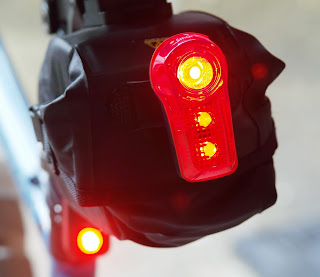Sometimes deadlines are like a slow but consistently burning fuse. Having
caught up following last weeks’ IT crisis, I headed off to Maldon Shot Blasting
& Powder Coating to witness and document my frames’ transformation stage by
stage.
After the usual pleasantries, conversation turned to other enticing
projects booked with them including lugged n’ brazed 531 frames from the early
1990s and various classic car shells/chassis awaiting blast and/or structural
repair.
Chris examined the Ilpompino’s factory livery and decided it was best
left soaking in their methyl chloride tank prior to blasting. Sometimes,
depending on the existing paint, it’s possible to skip straight to the blast
cabinet.
Once the active ingredient in over-the-counter stripping products;
methyl chloride is a nasty carcinogenic, so now the preserve of controlled
contexts. This is diluted with water to prevent evaporation but agitating the
depths unleashes an unmistakable, pungent odour. After fifteen minutes marinating in the
stagnant looking chemical soup, Chris dons rubber gauntlets and delves deep.
My frame emerges seconds’ later, almost completely bare save for some
localised residual silty paint. Passed through the glass bead cabinet and
several minutes’ intensive tickling reveals a bare, dimpled surface; it also
confirms my initial suspicions of surface pitting where the salt monster had
nibbled the right chainstay.
This doesn’t dictate Metafil, or similar specialist fillers but Chris
gently sands it flat before masking and plugging threaded sections. Critics of
powder coating cite that achieving two or more colour effects requires applying
2pac or similar wet spray paints atop. This is relatively labour intensive,
costly too...
Given this backdrop, a two-tone powder coat finish sounds a bit risky
but Chris and Graham seem completely comfortable with the commission.
Regardless of family, all paints have unique characteristics according
to their colours/pigments. My French blue/grey effect leads Graham to introduce
a thinner, corrosion inhibiting zinc phosphate primer, which won’t risk
imperfections in the top coats.
Midway through this formative stage my Sony Alpha SLR camera body gets the
sulks. Despite frantic efforts to re-dial settings, it refuses to deliver three
frames per second required. Hastily diverting to my trusty NEX5 ensures there’s
minimal loss of footage.
Confident of even coverage, “Izzie” is passed through the curing oven
for fifteen minutes and our attentions turn to locating French blue (5024) and
a complimentary grey. A hearty cheer erupts, signalling both
polyester powders are in stock and in plentiful quantity.
Graham starts by loading the 5024, confirms a good flow rate by
depressing the gun a few times and returns to the curing oven. Moments later,
the frame is earthed and ready to receive the colour coat. Graham covers the
main triangle under a blanket of pale blue before checking the powder is heaped
uniformly throughout. Two affirmative nods and it returns to their their curing
oven for ten minutes at 200 degrees.
Conversation meanders to the frame’s history, how I came to acquire it
and its significance to me. Having returned to the oven, we discover gallons of
molten frame preserve racing from the vent holes and bottom bracket shell...pooling
on the concrete floor.
Mercifully, this hasn’t contaminated the colour coat and can be deftly dismissed
but serves to illustrate the importance of warning your frame builder or spray
shop, should you suspect a frame has something oily sloshing around inside.
The boys take it all in their good humoured stride, blowing the frame
through with compressed air. Demon purged and our next dilemma is whether to
start the grey as a solid, or gradually fade it in atop the blue.
Solid effects involve masking, which in this context, risks permanent
“tan lines”; so we take the latter route. Unlike wet sprays, powders can be
blown into new shapes, or reused. Meticulous in their approach, Graham revises
this three times before progressing round the rear triangle.
Moments pass, tension mounts as his eyes painstakingly scan every last
particle. To my relief he nods again before spiriting it into the oven once
more. Finally, my beloved frame is given
an acrylic clear coat, which adds further protection, while accentuating its
rich, glossy lustre.
Right, time to introduce some
fresh home brewed frame preserve and helicopter tape to abrasion prone points; then I’ll build it up
before October’s through.
Heartfelt thanks go to the team at Maldon Shot blasting and Powder
Coating for undertaking this transformation www. http://ctc-powder-coating.co.uk/.
Trevor (Father and MSBC MD) has
asked me to point out that cost for this kind of specialist effect varies wildly depending upon several
factors. This includes colour choice(s), post blast remedial works and whether
decals/other detailing are required.






























































